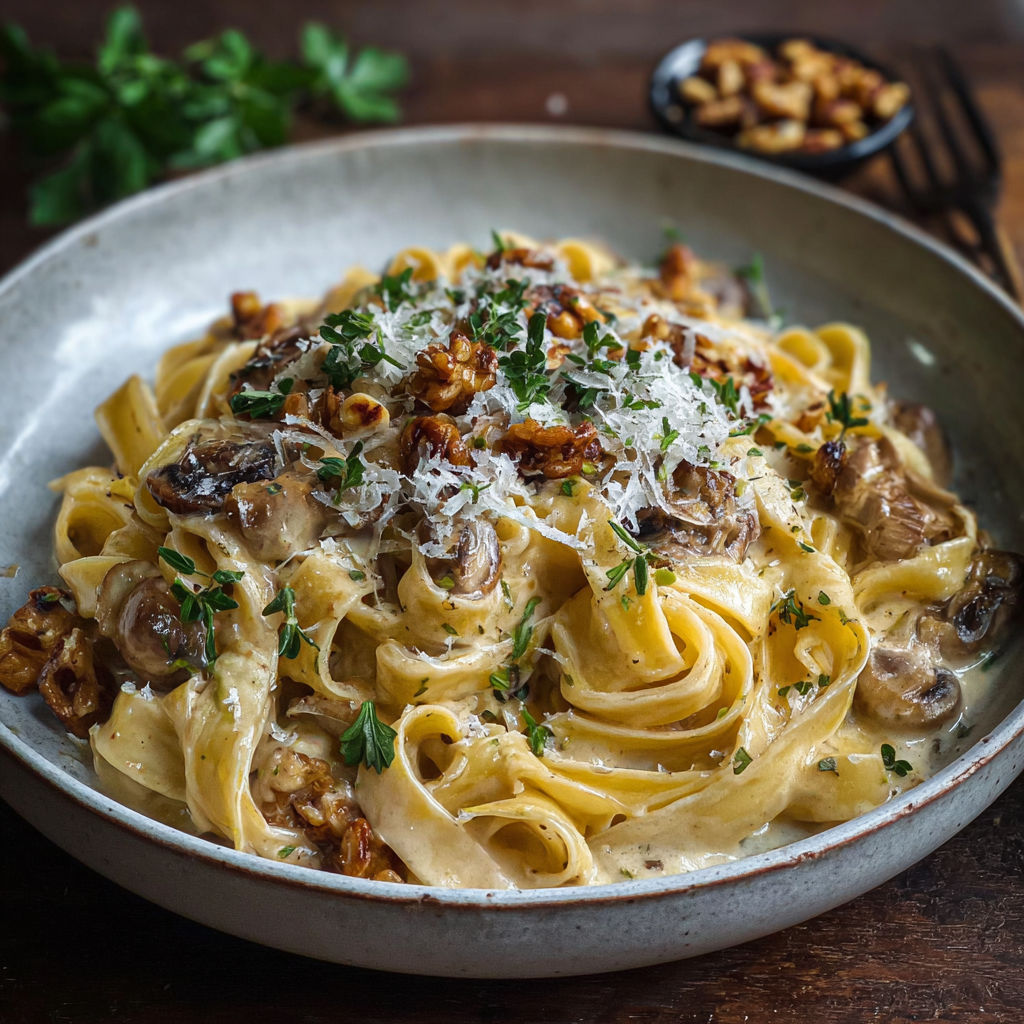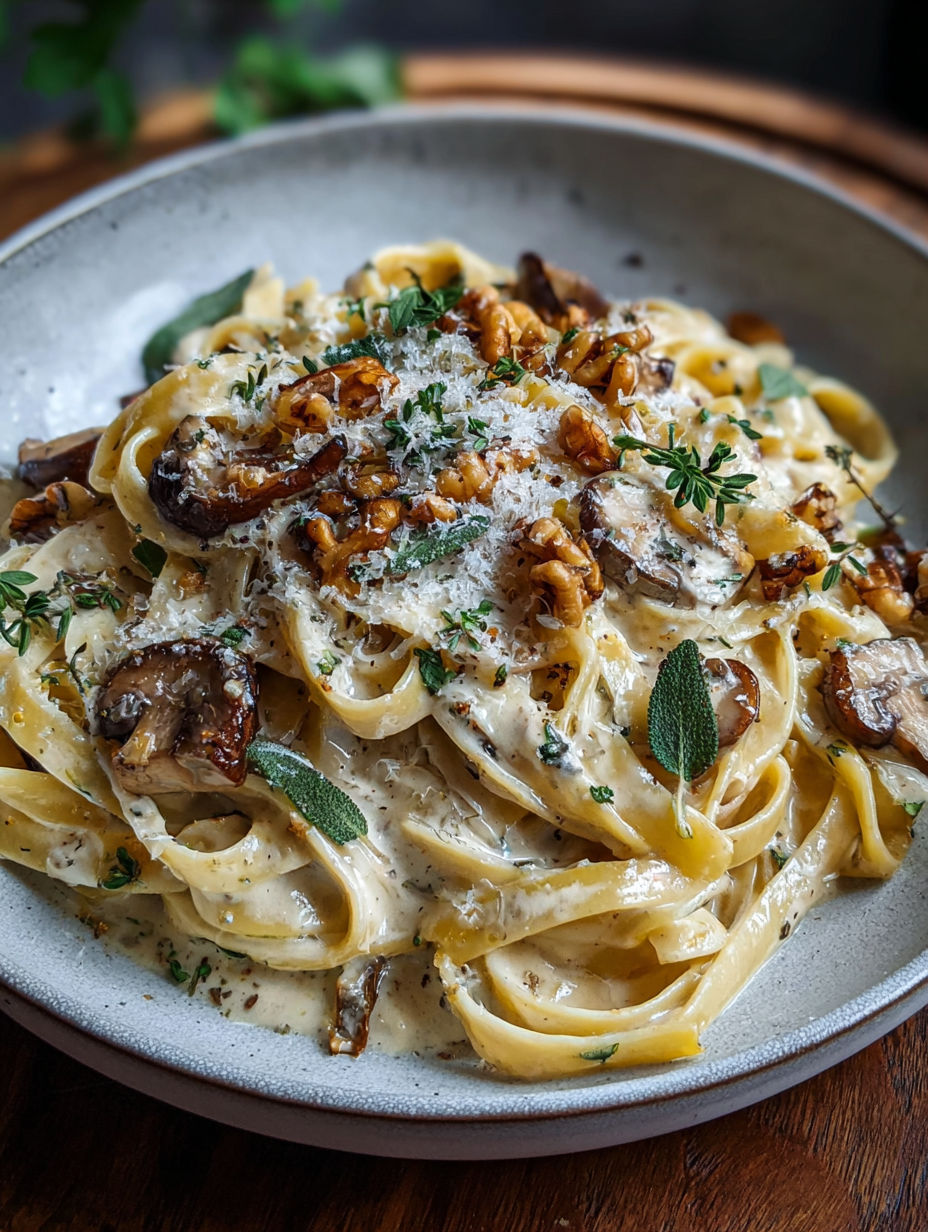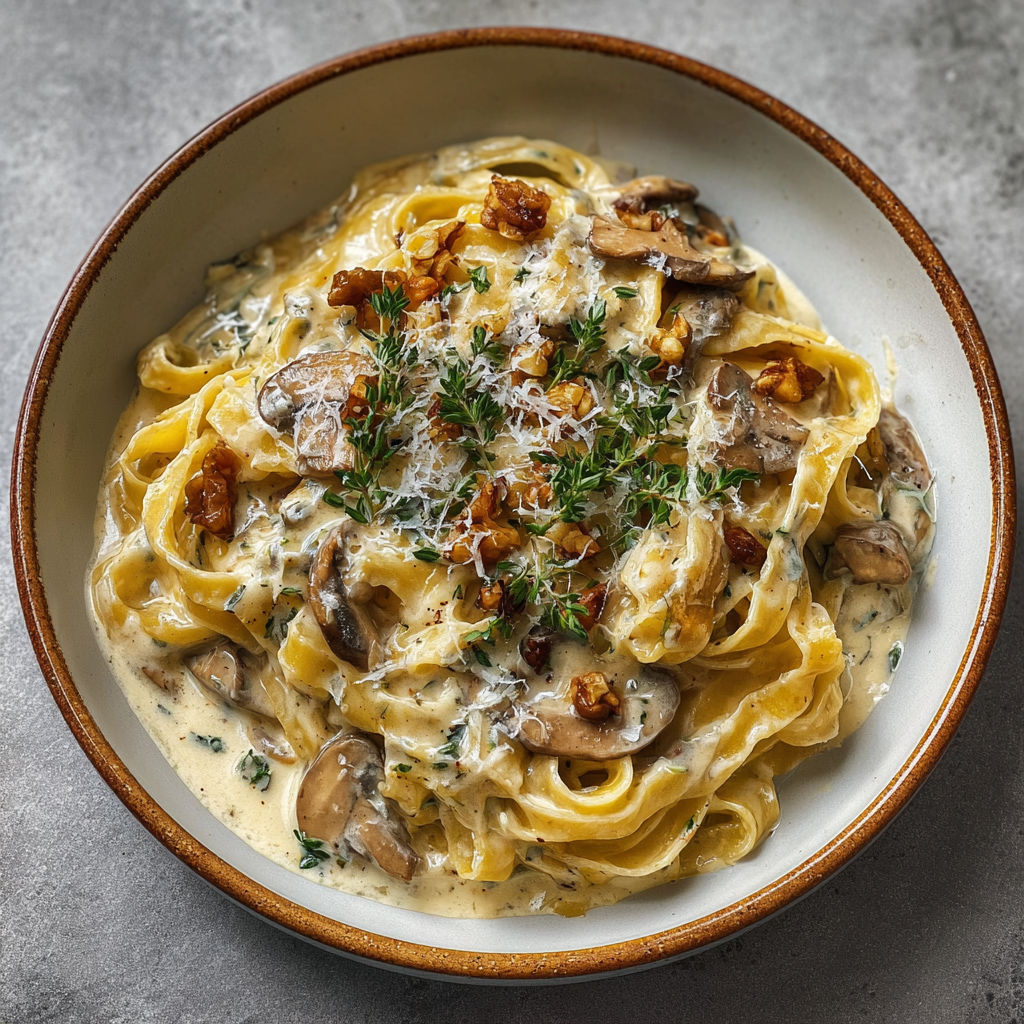 Pin
Pin
This silky chestnut pasta combines the unexpected sweetness of chestnuts with rich cream and aromatic garlic to create a luxurious dish that feels special yet comes together in just 30 minutes. When the weather turns chilly, this becomes my secret weapon for dinner parties that impress without exhausting the chef.
I discovered this recipe during a winter holiday in northern Italy, where chestnuts feature prominently in autumn and winter cooking. After one bite, I knew I needed to recreate this at home, and it's since become my signature dish when hosting friends who think they've tasted everything.
Ingredients
- Fettuccine or pappardelle pasta provides the perfect texture to capture the creamy sauce in every bite
- Cooked chestnuts bring a subtle sweetness and unique texture that makes this dish special look for vacuum packed varieties for convenience
- Unsalted butter creates a silky base for the sauce while allowing you to control the saltiness
- Olive oil adds fruity notes and prevents the butter from burning
- Garlic cloves infuse the sauce with aromatic depth choose plump firm cloves for best flavor
- Small onion adds sweetness and body to the sauce when finely chopped
- Heavy cream creates luxurious richness opt for highest fat content for best results
- Chicken or vegetable broth balances the cream and adds savory depth
- Parmesan cheese brings umami and slight saltiness that enhances all other flavors
- Fresh thyme leaves add earthy herbal notes that complement the chestnuts beautifully
- Ground nutmeg optional adds warmth and complexity that elevates the entire dish
- Salt and freshly ground black pepper for seasoning always taste as you cook
- Fresh parsley or sage leaves for garnish adds color and freshness
- Toasted pine nuts or walnuts adds textural contrast and nutty flavor
How To Make Creamy Chestnut Pasta with Garlic
- Prepare the pasta:
- Bring a large pot of generously salted water to a rolling boil. Add the pasta and cook until al dente according to package instructions usually 8 to 10 minutes. Reserve about a cup of the starchy pasta water before draining this liquid gold will help bind your sauce later if needed. Drain the pasta but do not rinse, as the starch helps the sauce adhere.
- Create the flavor base:
- Heat butter and olive oil in a large skillet over medium heat until the butter melts and begins to foam. Add the minced garlic and finely chopped onion to the pan, spreading them evenly. Sauté for 3 to 4 minutes, stirring occasionally, until they become fragrant and translucent. Be careful not to brown the garlic as it can become bitter.
- Incorporate the chestnuts:
- Add the chopped chestnuts to the skillet with the aromatics. Stir continuously and cook for 2 to 3 minutes until they're warmed through and begin to take on a slight golden color around the edges. This step allows the chestnuts to release their subtle sweetness and absorb the flavors from the garlic and onion.
- Develop the sauce:
- Slowly pour in the heavy cream and broth, stirring continuously to incorporate all ingredients. Bring the mixture to a gentle simmer not a boil and allow it to thicken for 5 to 7 minutes, stirring occasionally. You'll notice the sauce coating the back of a spoon when it reaches the right consistency.
- Enrich with cheese and seasonings:
- Add the grated Parmesan cheese, thyme, nutmeg if using, salt, and freshly ground black pepper. Stir continuously until the cheese completely melts and integrates into the sauce, creating a smooth, velvety texture. Taste and adjust seasonings as needed.
- Combine pasta and sauce:
- Add the drained pasta directly to the skillet with the chestnut sauce. Using tongs, gently toss the pasta until every strand is thoroughly coated with the creamy sauce. If the sauce seems too thick, gradually add small amounts of the reserved pasta water until you reach your desired consistency.
- Finish the dish:
- Allow the pasta and sauce to simmer together for 2 to 3 minutes on low heat. This final cooking time allows the pasta to absorb some of the sauce and for all the flavors to meld together beautifully. The pasta should look glossy and the sauce should cling to each strand.
- Plate and garnish:
- Transfer the pasta to warmed serving plates, twirling it with tongs to create height. Garnish with fresh herbs and a sprinkle of toasted nuts if desired. Serve immediately while hot, possibly with additional Parmesan on the side for guests to add to their taste.
The first time I made this for my partner, I was nervous about using chestnuts in pasta as it seemed unusual. Now he requests this dish for every special occasion, claiming the subtle sweetness of the chestnuts against the savory cream sauce is "restaurant worthy." I secretly agree but pretend it's much more difficult to make than it actually is.
Chestnut Selection Tips
Finding the right chestnuts is crucial for this recipe. While freshly roasted chestnuts provide the most intense flavor, they require significant prep work. For convenience without sacrificing quality, vacuum-sealed cooked chestnuts are excellent. They maintain a sweet nutty flavor and firm texture perfect for this sauce. Avoid canned chestnuts in syrup which are too sweet for this savory application. If using whole chestnuts, chop them into bite-sized pieces that will distribute evenly throughout the pasta.

Clever Substitutions
This recipe adapts beautifully to dietary needs without losing its charm. For a vegan version, replace heavy cream with full-fat coconut cream or cashew cream and use nutritional yeast instead of Parmesan. The butter can be swapped for additional olive oil or vegan butter. Gluten-free pasta works wonderfully the sauce is naturally gluten-free. For a lighter version, substitute half the cream with additional broth and reduce the Parmesan while the sauce won't be quite as rich, the chestnut flavor will actually be more pronounced.
Seasonal Variations
While this dish shines in autumn and winter when chestnuts are in season, it can be adapted year-round. In spring, add blanched asparagus tips or fresh peas. Summer calls for adding halved cherry tomatoes and fresh basil instead of thyme. For autumn, incorporate diced roasted butternut squash or pumpkin alongside the chestnuts. Winter is perfect for the recipe as written, perhaps with a pinch of cinnamon added to the nutmeg for warmth. Each season brings new possibilities while maintaining the dish's elegant character.
Make-Ahead Strategy
This pasta can be partially prepared in advance for stress-free entertaining. The chestnut cream sauce can be made up to two days ahead and refrigerated. When ready to serve, gently reheat the sauce, adding a splash of broth if needed to restore its silky texture. Cook the pasta fresh, slightly underdone, then finish cooking it in the reheated sauce. The garnishes can be prepped hours ahead garnish herbs can be washed, dried, and stored between paper towels while nuts can be toasted and stored in an airtight container.

Recipe FAQs
- → Can I use store-bought pre-cooked chestnuts?
Yes, vacuum-packed or jarred pre-cooked chestnuts work perfectly for this dish and save significant preparation time. If using dried chestnuts, be sure to soak and cook them thoroughly before incorporating them into the sauce.
- → How can I make this dish dairy-free?
Replace the butter with additional olive oil, use your preferred plant-based cream, substitute vegetable broth for chicken broth, and use nutritional yeast or dairy-free Parmesan alternative instead of cheese for a completely dairy-free version with similar richness and flavor.
- → What pasta shapes work best with this sauce?
Wide, flat pasta shapes like fettuccine or pappardelle are ideal as they provide maximum surface area for the creamy sauce to cling to. Alternatively, ridged pasta like rigatoni or shells can capture pockets of the chestnut cream sauce.
- → Can I prepare this dish ahead of time?
You can prepare the chestnut cream sauce up to 2 days ahead and refrigerate it. When ready to serve, gently reheat the sauce, adding a splash of broth or cream if needed to restore the consistency, then toss with freshly cooked pasta.
- → What wines pair well with chestnut pasta?
The earthy sweetness of chestnuts and richness of the cream sauce pair beautifully with medium-bodied white wines like Chardonnay or Viognier. For red wine lovers, try a light Pinot Noir or Beaujolais that won't overpower the delicate chestnut flavor.
- → Can I freeze leftovers?
While possible, cream-based pasta dishes generally don't freeze well as the sauce can separate when thawed. If you must freeze it, store in an airtight container for up to 1 month and reheat gently with additional cream to restore the texture.
